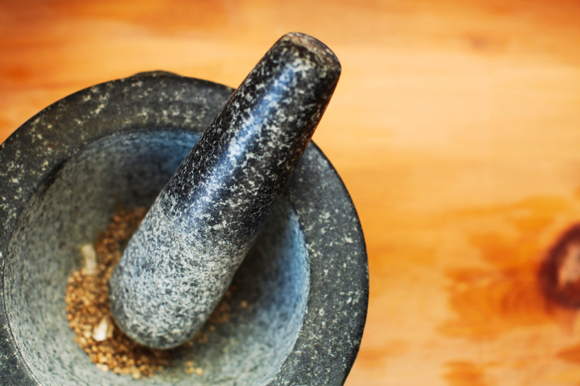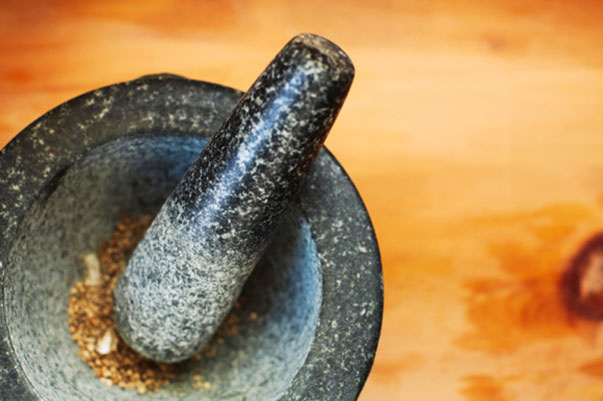
We Homo sapiens have been using kitchen utensils for quite awhile now. How long? Since the dawn of the Stone Age, nearly three million years ago!
Then it was mortar and pestles. Now it’s mortar and pestles and rice cookers sporting the Android operating system.
What happened in between? Let’s turn back the clock …
With the start of the Bronze Age, around 3600 BCE, wealthier households in the Middle East and Mediterranean regions ditched their stone and wood implements in favor of utensils made of—you guessed it—bronze. (And also copper.) As the archaeological record tells us, the Bronze Age was followed by the Iron Age, and more sophisticated forms of metallurgy produced more useful tools for food preparation.
But things really started to get interesting around the 8th Century BCE, with the start of Roman Empire. The Romans popularized a variety of kitchen utensils, including meat hooks, meat mincers, spatulas, colanders/strainers and ladles, frequently made of iron, as well as pots and kettles made of bronze and terracotta.
Side note: What ever happened to the meat hook?
The Middle Ages, despite having a reputation for darkness, was a pretty bright time in terms of kitchenalia. Slotted spoons became popular, as did frying pans, pepper mills, tongs, mallets and (one of my favorites) waffle irons. The medieval kitchen also had weighing scales, roasting forks, rolling pins and even cheese graters.
With the start of the early modern period you begin to see even more specialization with tools like apple corers, cork screws and later, with the proliferation of canned food, can-openers.
And at some point, we ditched the meat hook.
The 19th century, particularly in the United States, witnessed a dramatic expansion in the number of kitchen utensils available on the market, such as labor-savers like potato peelers, jelly molds and salad spinners.
Signs of dissatisfaction with copper utensils, which reacted with acidic foods, were emerging, and other metals gained popularity. By the turn of the 20th century, kitchen utensils were commonly made of (tinned or enameled) iron and steel, nickel, silver, tin, and aluminium.
As predicted by Mr. McGuire in The Graduate, the latter part of the 20th century witnessed the proliferation of petro-based utensils—plastics.
See also: The humble spatula’s linguistic origins – The Week

